Introduction
Meat injectors are a great tool for increasing the flavor and moisture in meat. They basically look like a giant hypodermic syringe, and they’re used to inject brine, marinade or sauces into meat before it’s cooked. Normally with marinating, you just sit the meat in the marinade and let it soak in, but it only soaks a few centimetres in. With injecting, the flavor and moisture gets deep inside the meat where it can permeate the whole cut of meat, ensuring the finished cooked product falls apart and is full of flavor!
Read this in conjunction with our Top 5 Meat Injectors review to find out what we liked.
What to look for?
Capacity
Sizes typically start at about 30ml / 1oz and move upwards. 30ml units are fine for things like a few steaks, but for most people the sweet spot is about 60ml / 2oz – they’re still easy to operate with one hand but have enough capacity to inject a reasonable size chicken or turkey with only one or two refills. There are a few 120ml / 4oz syringes on the market, as well as larger multi-needle units connected via a hose to a bottle, but these are generally more cumbersome to handle and really only make sense for large-volume commercial use.
Material – Plastic or Metal?
Plastic injectors are very affordable with prices normally from only about $7. They’re fine for occasional use on small cuts of meat, but it’s quite common to read customer reports of the plastic barrel splitting under the pressure of injecting, or for the plastic thread breaking where the needle screws on. The rubber seals also tend to perish with repeated use, and the needles are very small.
Some injectors use a stainless steel skin around a plastic barrel. These look higher class than straight plastic units, however underneath the skin they’re still just a plastic injector with all the faults of a plastic injector, so you’re only really paying extra money for a nicer looking cover. Be aware it can be hard to clean between the plastic barrel and the metal skin too.
100% metal injectors are a much more solid proposition, and given prices generally start at about $12 (ranging up to mid-$30’s), it’s hard to recommend plastic ones against entry-level metal ones. However there are some important differences in that fairly broad price range. Some of these are obvious – some come with more components and better storage solutions, but the hidden factor is the metal.
Metals ain’t metals
All the metal injectors we looked at are stainless steel on the outside, but cheaper units use cheaper and softer materials like chrome-plated brass, aluminium or Kirsite for most of the internal components. These materials won’t last as long, and may not be food-safe either (especially aluminium), and anything which is to be in contact with food should really use 100% stainless steel for any parts which touch the food. We can’t stress enough to do your homework carefully here and don’t believe everything you read – we found a number of injectors falsely advertised as “100% stainless steel” or claiming certain parts were stainless steel, when in fact almost all of them used chrome-plated brass or aluminium components. It is worrying that more fuss isn’t being made about this false advertising by marketplace governors.
So how can you tell? Unfortunately, from manufacturer’s photos you probably can’t. You can really only tell once you’ve bought it (by which stage it’s too late). However you can see the difference in the photos below, where the barrels are all stainless steel:
- if the barrel nosing has the same appearance and finish it’s more likely to be stainless steel
- If it’s shinier than the barrel it’s probably chrome-plated (although polished stainless steel could appear very similar)
- If it’s matte and a little white in appearance it’s probably bare aluminium
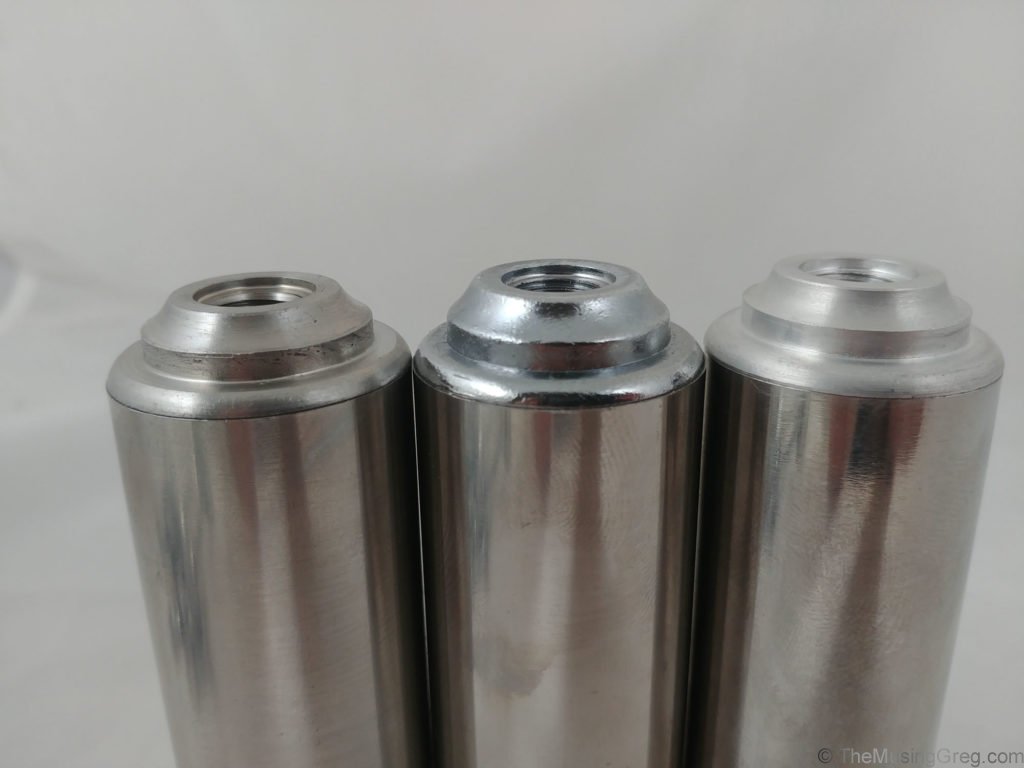
The same goes for the plunger disc, however it’s possible the stainless steel disc will have machining rings as in the case of Premiala’s. If they’ve been chrome-plated these are likely to be less pronounced due to the chrome plating.
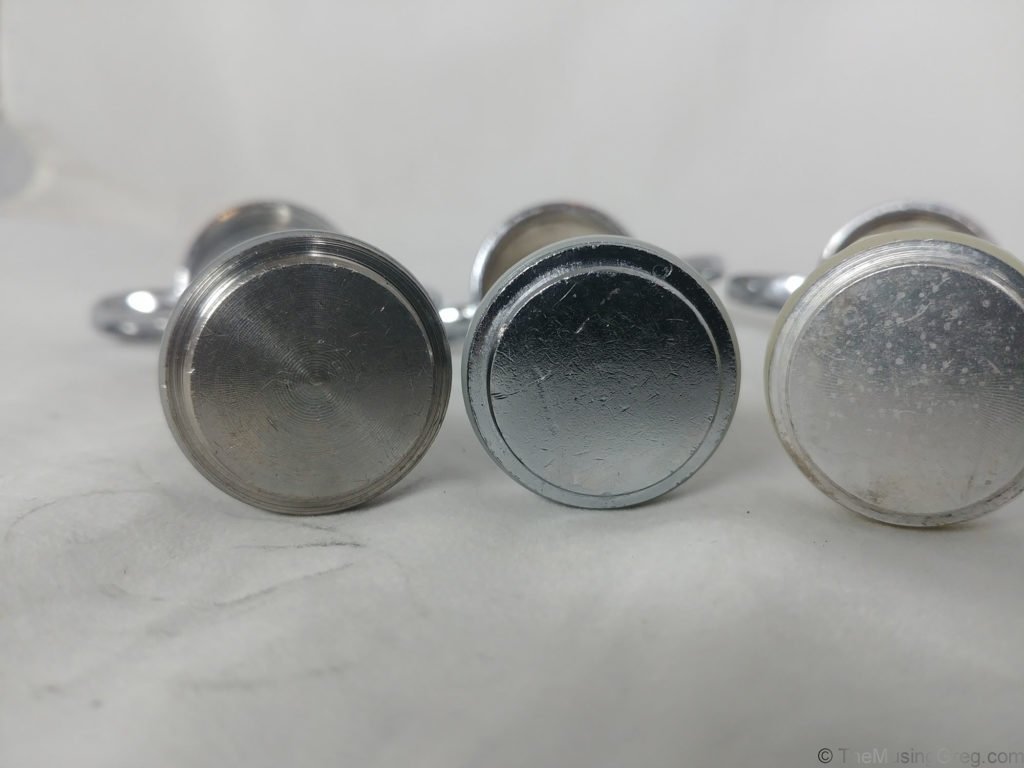
This problem is exacerbated by the fact most consumers simply don’t know the difference – they assume if it’s silver and shiny it must be stainless steel like they were told. Several products we bought we found used non-stainless steel components, yet some buyer reviews laud the great bargain they got and the ‘high quality stainless steel’, thereby inadvertently perpetuating the deception. If only they knew how much they’d been conned…
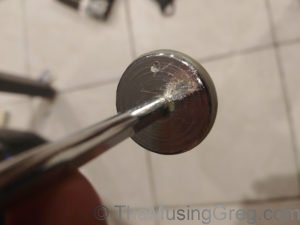
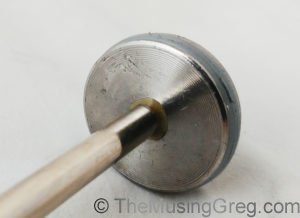
Needles
Plastic injectors often only come with a single narrow needle as they’re not really designed for injecting whole birds. Most metal injectors will come with two needles – a multi-hole needle for liquids, an open-ended needle for thicker marinades. A few metal injectors include a small needle for injecting marinade into steaks, and these needles are also good for injecting jam into donuts (yes you can use them for that too!).
There are two styles of needles – try to get ones with the sharp pointy tips as these are easier to pierce through the meat.
For the small needles, try to avoid ones like shown below where one of the holes is a long way from the tip. This means you can’t inject marinade all the way to the surface on both sides of the needle, as the marinade will spurt out the top hole once it’s clear of the meat.
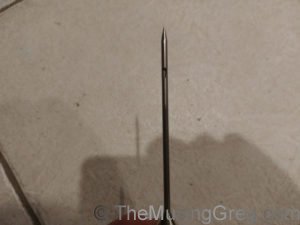
Other things to consider
Other add-ons can make your product more useful or be more helpful to you to use:
- Spare parts – needles break or get lost, and o-rings eventually wear out, so depending how much you’re spending you might want to look out for a unit which comes with spare parts, and/or sells them separately so you don’t have to replace your whole injector if one goes missing.
- Some include e-books with recipes, although the quality of these can vary considerably. Some manufacturers invest significant effort into putting together a solid guide, while others are a single page PDF of instructions with one or two recipes. Again, read buyer reviews on this, particularly if you’re new to injecting and could do with a little guidance (they’re not fundamentally hard to use, but there are definitely a few tricks to getting best results).
- A few manufacturers include needle cleaning brushes, to ensure no old meat is left behind in the needles after use. This is important if using it to treat meat and if food safety is a big issue, but is less important if you’re only using it for injecting jams or sauces into pastries as that washes out easily
- Warranty – normally only an issue if it’s a more expensive product
Packaging
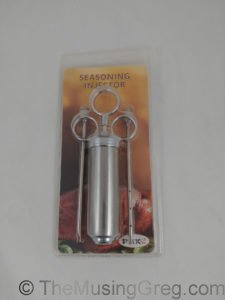
This varies considerably, from cheap plastic blister packaging, to professional cardboard gift boxes with foam cut-outs, right up to full carry cases. Products with just two needles and no other accessories can get by with basic packaging and just keep the needles in the cutlery drawer, but if there are other smaller components or spares included, consider one of the better options so everything stays together.
As an aside, blister cases are actually designed for physical stores so the product can be seen on the shelf; they serve no purpose in online trade where you can’t see the product apart from being a very cheap way of packaging the product. They also fail to offer anything but the most basic physical protection to the product.
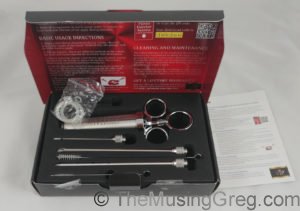
The company
If this is a considered purchase, check out the company’s philosophy. Here are a few things to ask:
- Are they generally a budget brand, mid-range or high-end?
- Do they provide spare parts for their product so you can replace any parts which wear, break or are lost, or are you comfortable purchasing a complete replacement product if one part needs replacing?
- What warranty do they offer?
- What is their seller feedback rating, for example on Amazon? Do they respond in a timely manner to customer comments in product reviews, particularly the negative ones, or are these ignored?
Answering these questions will give you a very good idea of the type of service you’re likely to get, particularly should anything go wrong.